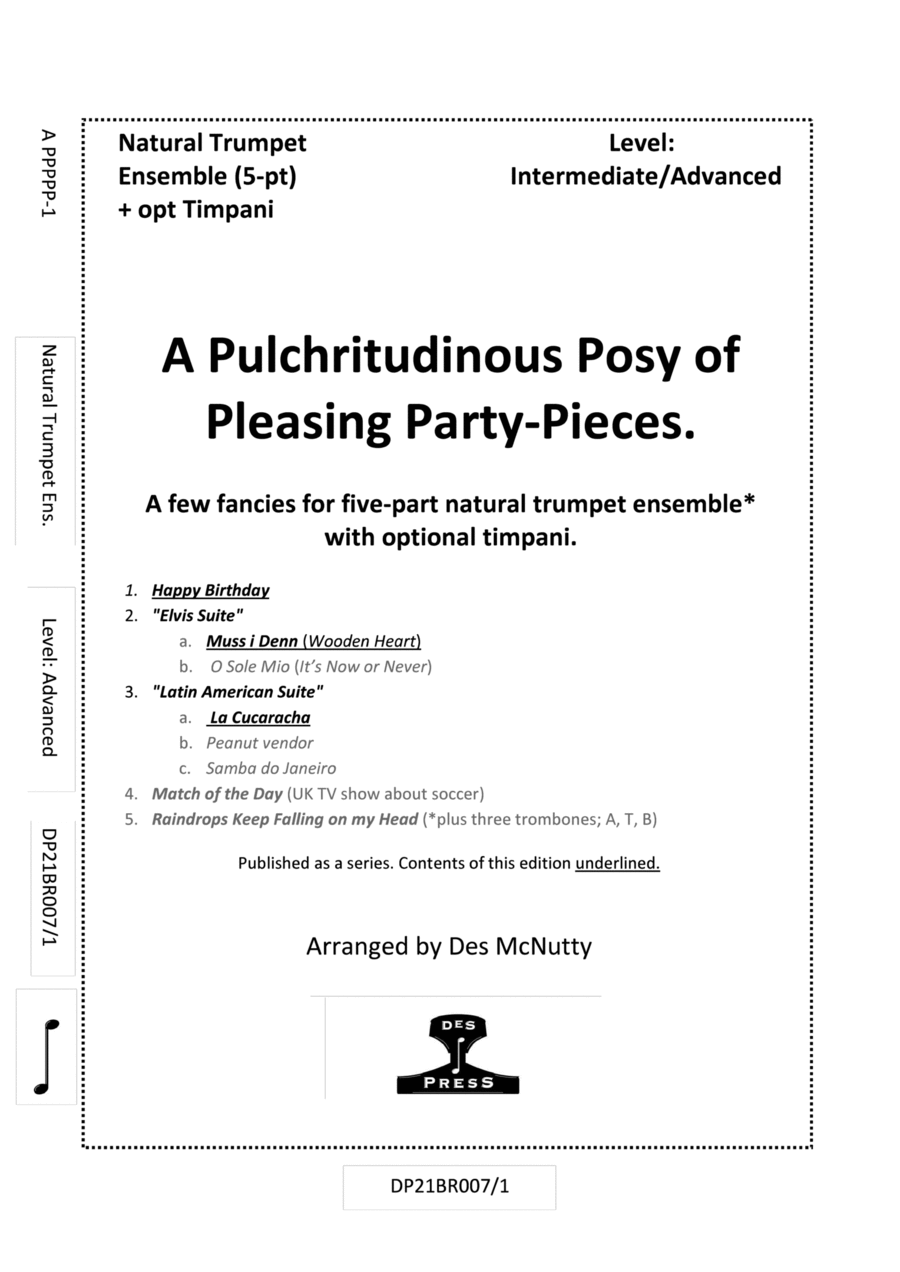Instrumental Duet Instrumental Duet,Timpani,Trumpet - Level 4 - Digital Download SKU: A0.977351 Composed by Friedrich Silcher, Hill/Hill, and Trad. Arranged by Des McNutty. Concert,Folk,Holiday,Latin. Score and parts. 24 pages. Des Press #6437339. Published by Des Press (A0.977351). Happy Birthday EdMuss i DennLa CucarachaAt last: Some new repertoire for the historical natural trumpet! This one-handed instrument was familiar to composers such as JS Bach, Handel, Telemann, Purcell, Vivaldi etc., but was largely neglected after the invention of valves in the early 19th century - and the subsequent invention of the nodal vent-hole systems in the late 20th-century - until recently, when the elusive lost art of clarino playing (in the fourth octave and above) was cracked by dedicated optimists such as Don L Smithers and JF Madeuf. These arrangements are a stylistic departure from the trumpet's golden age of Baroque repertoire, featuring works well known in the 20th century, and provide excellent training for rhythmic precision, style, pitching and team playing. They're also fun, if you like that sort of thing. Advice on tuning up the differently-pitched instruments and a technical tip are included. The current regulations on SMP mean us little guys can only publish in-copyright works one at a time. So, you can collect them all and make yourself a tome! This arrangement of Happy Birthday was written in 2011 for Edward H Tarr's 75th birthday concert in Basel (CH). Ed conducted many pieces from the Charamela Real, mostly for trumpets in two different tonalities. Happy Birthday was slipped in the programme before the second encore without his knowledge. At his downbeat, he got quite a surprise. The rest of these arrangements were originally written for Lunchtime Tower Music (weather permitting), at the Dartington International Summer School between roughly 2000 and 2010, for courses led by Michael Laird and David Staff. Such performances from the mediæval clock tower involved the various brass and other wind classes playing seriously with an informal atmosphere. Logistical issues, a narrow staircase and the ubiquitous Health-and-Safety regulations prevented the use of timpani on the tower but sometimes larger groups, and those involving vertigo sufferers, played in the courtyard instead. These pieces are the opposite of playing Baroque music on modern, or postmodern instruments. Get them all now and enjoy a refreshing change! Enjoy! DM
